The Navigator (1924) and The Scribe (1966)
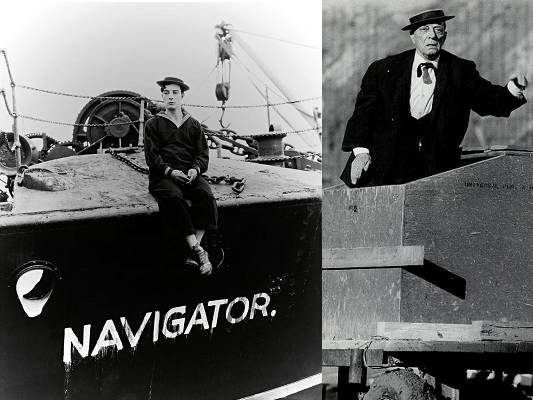
Toronto Film Society presented The Navigator (1924) on Monday, July 10, 2023 in a double bill with The Scribe (1966) as part of the Season 75 Summer Series, Programme 1.
Producer: Buster Keaton. Distributor: Metro-Goldwyn. Directors: Buster Keaton, Donald Crisp. Screenplay: Clyde Bruckman, Jean C. Havez, Joseph A. Mitchell, Buster Keaton. Cinematography: Byron Houck, Elgin Lessley. Film Editor: Buster Keaton.
Cast: Buster Keaton (Rollo Treadway), Kathryn McGuire (Betsy O’Brien), Frederick Vroom (John O’Brien), Clarence Burton (Spy), H.N. Clugston (Spy), Noble Johnson (Cannibal chief).
Tonight marks the third time TFS has shown The Navigator. The first was on Monday, December 11, 1950 at the Royal Ontario Museum Theatre, the second was on Monday, January 6, 1966 at the Unitarian Church at 175 St. Clair West.
The following are the edited notes that one of TFS’ founders, Fraser MacDonald, wrote in 1966. The full version can be found on our website here.
You have probably heard it said that Keaton in his films represented man being constantly bedeviled by machinery, or some such high-falutin’ nonsense. Nonsense it is, because an examination of his films shows just the opposite: man’s ingenuity in using gadgets and other mechanical devices to help him cope with the world. In The General, for instance, as long as Buster is in charge of his engine he is in control of the situation; machines indeed may break down, but he is never at a loss. The only thing that taxes his ingenuity is the feminine helplessness of his frail heroine.
In The Navigator, as you will see, he is plunged into a situation of primitiveness that is utterly foreign to his experience. He proceeds to cope as best he can, and after his initial bewilderment he soon has the situation completely in hand. Keaton and machines get along very well.
To give you your money’s worth on this film, we’re going to quote Keaton’s description of a gag that was intended for The Navigator but which does not appear in the film now. The story of why it is no longer there also serves to illustrate his conscientiousness as an artist. Keaton first told this story in an autobiography that ran in the Ladies Home Journal (I believe) some time during the latter 1920’s; but he tells it again thus in his book “My Wonderful World of Slapstick” (p174 et seq):
“Another interesting thing I learned later (HE HAS BEEN DISCUSSING THE INADVISABILITY OF USING “IMPOSSIBLE” GAGS IN A FEATURE FILM, THOUGH HE HAD USED MANY IN HIS TWO-REELERS) was that once you got the audience interested in what the hero was doing, they deeply resented anything that interrupted him. It didn’t matter what terrific gag you gave them.
I had this demonstrated to me some years later when we were previewing The Navigator, my biggest money-maker. I consider The Navigator and The General the two best movies I ever made. In one scene in The Navigator I was alone with the girl on a beached ship close to a cannibal-infested island.
To save her and myself, I went underwater in a diver’s outfit in a heroic effort to dislodge the ship. While working mightily, I used many gags the audience loved. (HERE KEATON DESCRIBES SOME OF THESE GAGS; BUT WE WON’T GIVE THEM AWAY BEFORE YOU’VE SEEN THE FILM).
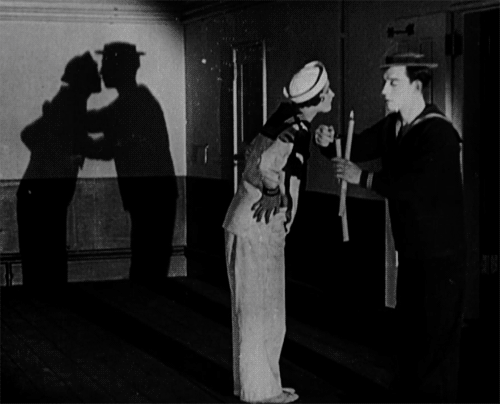
The gag that failed was my favorite, and it cost a lot of money. After we figured it out, I had the property department construct 1,200 rubber fish each fourteen to fifteen inches long. These were suspended on thin strings the audience couldn’t see. We used a big machine that looked like a newspaper printing press to revolve them in front of the camera. The effect we got was that of a large school of fish passing by in a steady stream. One big fish came up but could not get through the school. To solve this problem, I pick up a starfish that is clinging to a rock, attach it to my chest, and stand directing the piscatorial traffic like a submarine traffic cop. Holding up my hand so the big fish could get through did the trick. The stream of fish passing by stop, the big fellow crosses, then I wave to the school to go on. In my opinion, this was as good a sight gag as I ever had, and it is still my favorite. When we put it in the trailer, announcing The Navigator as a coming attraction, the audience howled. But when we previewed the whole picture at Long Beach it brought not a titter. The same thing happened when we tried The Navigator out, in theatres in Riverside and a couple of other nearby towns.
It took us a long time to figure out why that wonderful gag laid an egg. One of my gagmen, Clyde Bruckman, was so stunned that he almost took the pledge. It is always an interesting problem to me when an audience rejects any such sure-fire laugh-getter. I wonder whether it is because the customers were too concerned in figuring out the mechanics of the gag, how it is done, to be amused. Or it might be something else. In this case we showed it again in the trailer, and everybody once more liked it. That gave me an answer that satisfied me. The other gags were accepted by audiences who saw the whole picture, because they did not interfere with my job of saving the girl. But when I directed the submarine traffic, I was interrupting the rescue to do something else that couldn’t help us out of the jam.
I threw the gag out. There was nothing else to do. Some of my co-workers thought the gag flopped because it was too intricate. But I still believe it fell dead because it showed the hero interrupting the job of saving himself and the girl. From that day on, I realized that my feature comedies would succeed best when the audience took the plot seriously enough to root for me as I indomitably worked my way out of mounting perils.”
Keaton’s diagnosis is obviously right; but we venture to believe that another cause of the gag’s failure was the fact that it was also an “impossible” gag in the context of a possible (however improbable) situation. One of the other gags in this underwater sequence which he left in (we won’t spoil it for you by pointing it out) is similarly out of character.
(One more comment on Keaton: Good looks are so unnecessary in a comedian that even their presence often goes unnoticed. Has it ever occurred to you what a matinee idol Keaton would have been if he had exploited his handsome face and beautiful eyes instead of his gift for wild comedy?)
The original notes ended with this: Buster was 70 last October. He says he intends to live to be a hundred; and we sincerely hope he will.
Notes by Fraser MacDonald
Spot the Canadian by Leslie Smith
There was something about Frederick Vroom that Buster Keaton liked. How else to explain his casting of the then-veteran stage and film actor in two of his most successful films: The Navigator (1924) and The General (1926)? (The Navigator was actually Keaton’s biggest hit and he cited it as his best film. In 2018, it was selected for preservation by the US Library of Congress.)
Vroom, who plays John O’Brien, the heroine’s father in The Navigator, was born November 11th, 1857 in Clementsport, located on the southern tip of Nova Scotia’s Annapolis Valley.
He claimed to have been inspired to be an actor at the age of 16, after seeing Edwin Booth appear as Brutus in Shakespeare’s Julius Caesar (later, he would share the same stage with his idol, performing in a series of Shakespearean plays). But, at the turn of the 20th Century, Vroom elected to leave acting to spend a decade prospecting for Alaskan gold. The gamble did not pay off and, by 1910, Vroom had started appearing in motion pictures – then considered the bottom of the acting barrel – working for one of the first film studios, the Thanhauser Company of New Rochelle, New York.
Eventually, he moved to Hollywood, sometimes directing, and acting in supporting roles and bit parts in over 70 films. He was married but had no children. Vroom died of a heart attack in LA in 1942.
************
Technical director Fred “Gabe” Gabourie was another Keaton favourite who became part of The Navigator’s crew. He was born September 19th 1881 in Tweed, Ontario, a member of the Iroquois tribe of the Seneca Nation.
In his late teens, likely seeking adventure, Gabourie enlisted as a US Army private in the Spanish-American War. We draw a blank for the next decade and a half but somehow, Gabourie ended up joining Roscoe (“Fatty”) Arbuckle’s Comique film company in New York. He stayed with the organization when it changed hands (and location) in 1920, thereafter working as an art director, set designer and, most important, technical director for Buster Keaton in Hollywood.
It was Gabourie’s genius that, among other filmic tricks, created the ramshackle spinning house in One Week (1920) as well as the precision fall of the house wall in Steamboat Bill Jr. (1928). He’s also credited for inspiring The Navigator, after telling Keaton about a derelict ship he’d seen while scouting locations for The Sea Hawk (1924).
Gabourie held his official role of construction supervisor at MGM for two more decades, before dying of a chronic heart condition in 1951. He was survived by his wife and two children, one of whom, Fred Gabourie, Jr., worked in films as a bit player and stuntman.
************
Classic films, sound and silent, underwent a renaissance in the 1950s and 60s. Stars and film-makers who had been has-beens for a long time suddenly found themselves back in demand. Most were content to add to historical annals via interviews and autobiographies, or to appear in the occasional TV commercial or game show.
From Chris Seguin: However, Buster Keaton had an outstanding third act and one of the greatest comebacks in film/TV history at the time. (Except for maybe Al Jolson thanks to “The Jolson Story”.) Keaton was in heavy demand with guest spots in movies and TV, filming commercials. He was just driven to work. A few months before The Railrodder, he shot an experimental film written by Samuel Beckett called Film, so he was open to anything.
In October 1964, Canada indulged him, bringing him north for the short feature, The Railrodder (1965) written and directed by Gerald Potterton for the National Film Board of Canada. In it, Keaton takes an amusing cross-country trek highlighting scenic vistas via rail, while riding an open-top rail maintenance vehicle commonly known as a “speeder.” It was Keaton’s last silent film, featuring overdubbed sound effects but no dialogue.
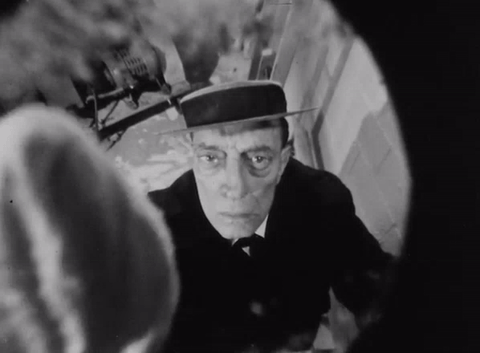
The following October, Buster was again enticed north. This time, he plays an amateur journalist experiencing construction site safety first-hand in The Scribe (1966). Produced by the Construction Safety Association of Ontario and directed by John Sebert, the short-subject film was shot at the Toronto cross-streets of Bay and Wellesley, where the government buildings were then under construction. Some of Keaton’s old gags ended up in the picture.
It would be his last film. On February 1st, 1966, Keaton died of lung cancer.
The Revue Cinema’s Eric Veillette wrote about The Scribe for the Toronto Star in 2013, when the film was rereleased, to the acclaim of Keaton-ians everywhere. You can read it here.

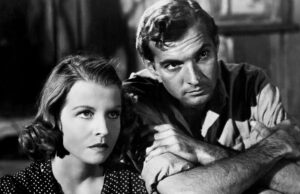
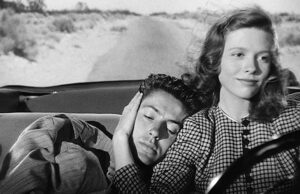
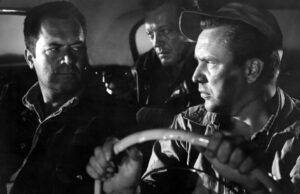






Leave a Reply